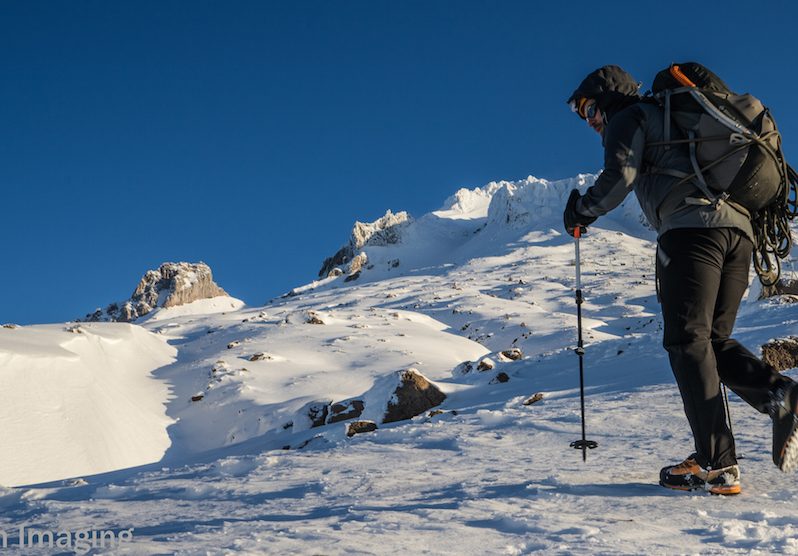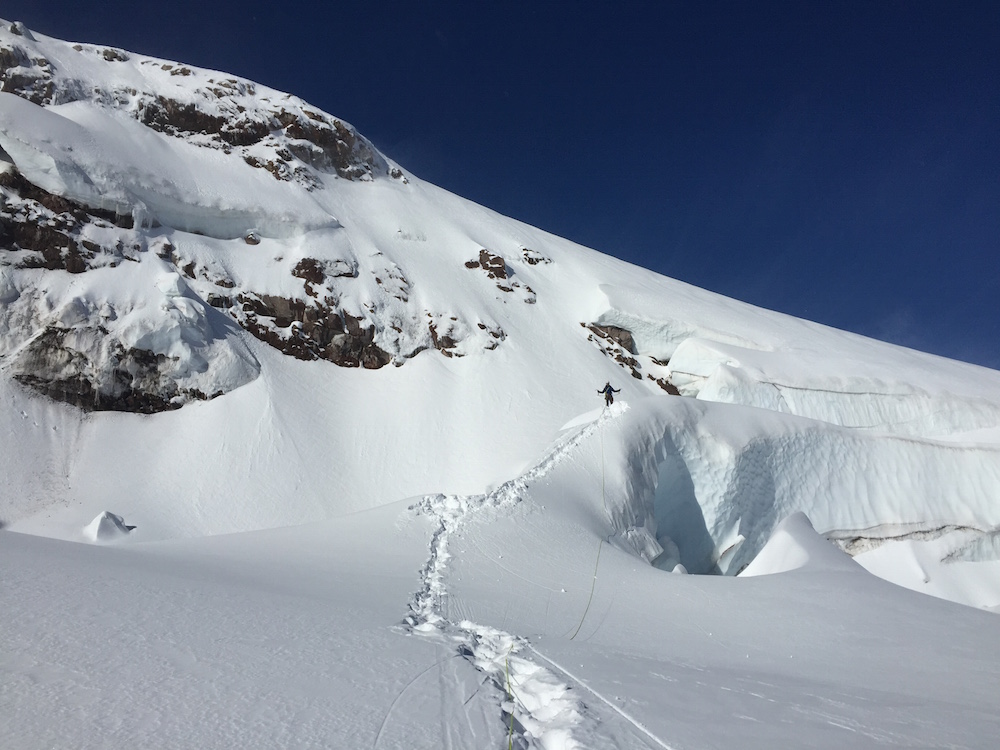Editor’s Note: Anyone thinking of hiking up to nab a few early-season turns on Mount Hood should read this story from experienced climber Joe Poulton, and think very carefully about safety. Snow conditions have been hazardous in the early going, as Joe and his climbing partner found out the other day in a very close call. Here’s Joe’s story from that day, with some beautiful, ominous photos:
On November 10, 2015 at 10:10 am I lost my right to say I’ve never triggered a slide, that beast lurking in the snowpack as soon as the first snow flake falls from the sky.
I had started connecting with people to sort out a possible trip up Mount Hood a few days before. I ended up connecting with Ben B. for an Illumination Rock climb on the next window of good weather. Checking the weather forecast with Mountainforecast.com I knew there would be some snow on the ground during our climb day.
We met up at 3:30 am for the carpool to Hood. Driving up, I was not even thinking about snow and avalanches, or approach routes. Instead, I was thinking about the rocky summit ridge of Illumination Rock and how amazing it was going to be up there.
We headed for Illumination Rock, and there was a lot of snow up there. When I did a few one-hand pits at about 8500 feet to reach in and get a feel for the snow layers the snow was way deeper than expected, yet still shallow enough to dig with one hand to the base. There were two layers of crust with a boiler-plate base, and that raised a red flag. The base underneath was boiler-plate ice, hazardous and slick. By then we were already on the slope.
Once we got to the start of the West Chamber, there was a nicely filled-in moat along the rock where we took refuge and discussed our concerns. Ben was getting worried about our late arrival to the route, being that it was already 9:45. I was concerned with the snowpack layering and the high likelihood of a human-triggered slide. Looking up into the chamber from our safe spot, it looked like the coverage was thinner above, with more more ice than snow. So, we decided to have a look. I wallowed through waist-deep soft snow along the right edge of the chamber next to the cliff for about 15 feet. Once in a small rock corner I stomped out a bit of a platform to get some photos of Ben following.
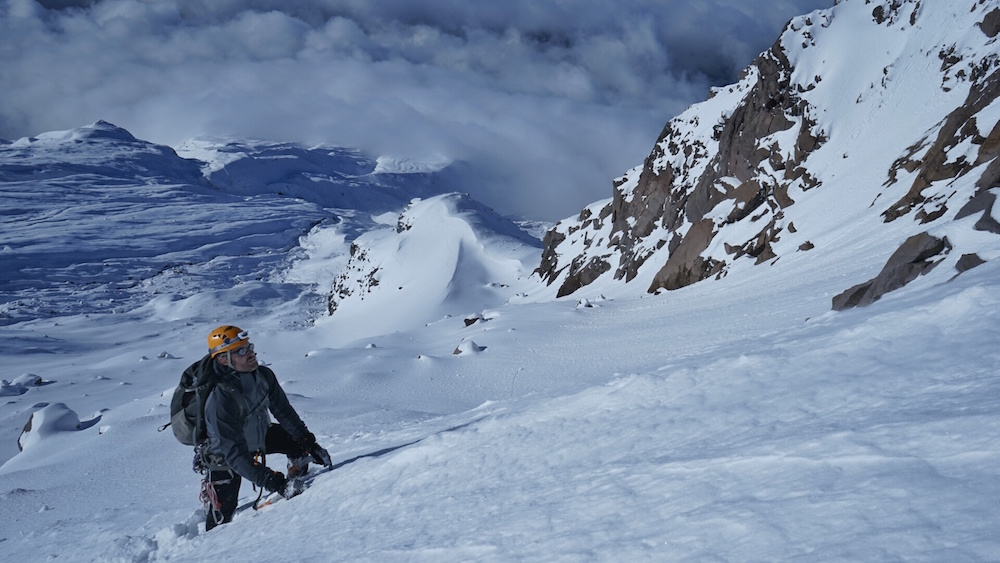
He started up and went a bit further climber’s left into the start of the chamber. After snapping one photo, I heard the sound from my right. I’ve read about that sound, but it was my first time hearing it. It was the deep, soft sound of something collapsing and giving way. I looked over about 15 feet above Ben and saw the crack, and snow start moving. He was on the edge of the slide and as soon as I started yelling for him to roll he was already into his first full body roll. Luckily the slide did not step down to release all the snow down to the boiler plate layer, and Ben was able to roll off the slab without getting swept down the mountain.
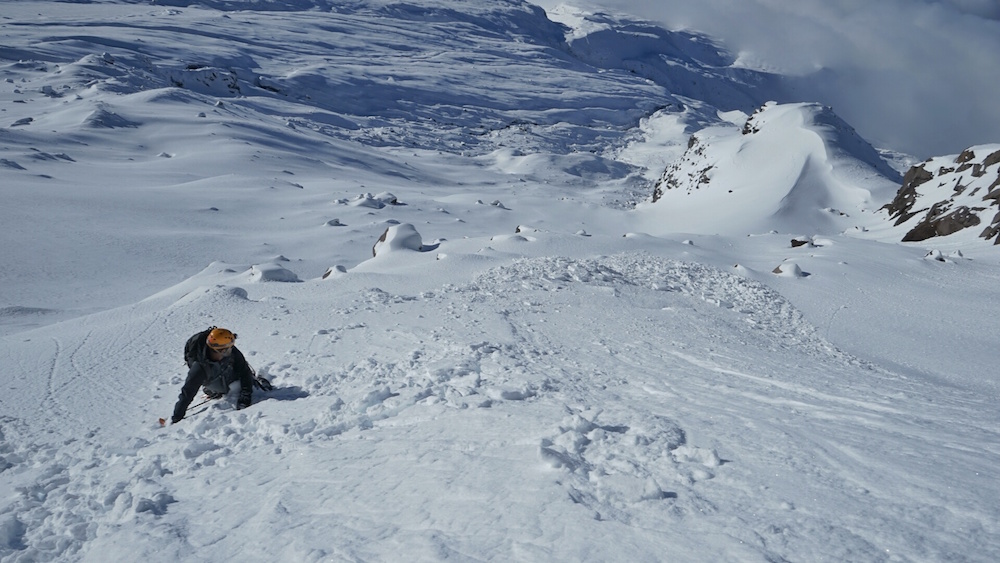
The consequences could have been big. Fortunately the snow did not come down all the way to the icy layer. What gave way was the snow on top of the crusts. This photo shows a crack in the snow above, large enough to convince us to head home for the day:
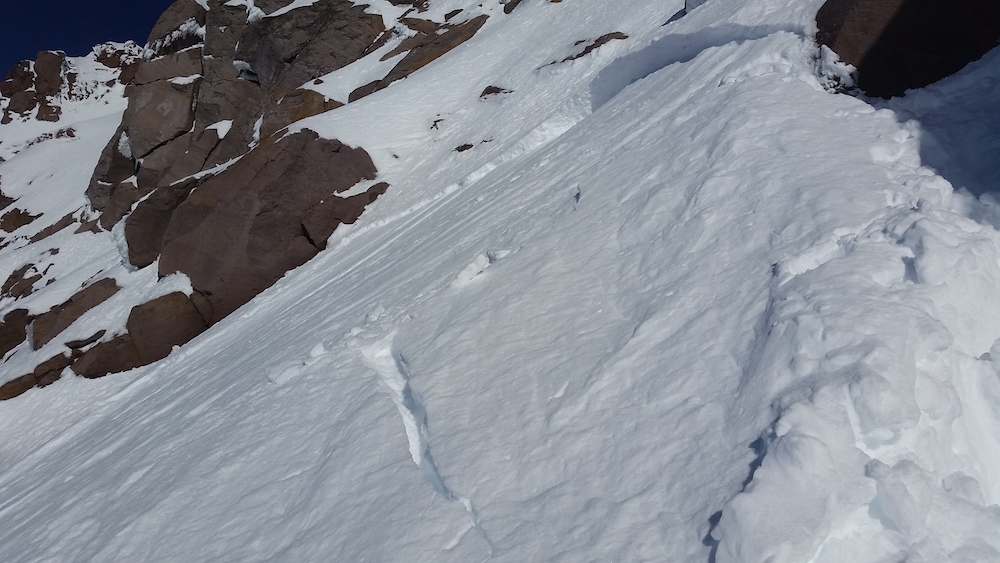
The only thing we could have done differently to not have triggered the slide would have been to pull the plug right after our safety discussion — or to stay at home.
I just can’t believe I made a decision that resulted in a slide. I’ve been enjoying the backcountry for 20 years, from Mount Hood to Colorado, including some quality solo journeys. But this day, I wanted the rock, and that want prevented me from reading the conditions properly.
It’s ironic that my first slide would be on Mount Hood. I grew up on Hood, skiing its slopes since I was 4 years old. Perhaps that added weight to the decision to keep going, the familiar place and climate. I never triggered a slide in Colorado and that place is known for dangerous slides. Whatever the case, the healthy fear that keeps you safe n the backcountry is back and firmly planted.
After this event I had to call my father. He has climbed Hood multiple times, including Yokum Ridge, and he’s had many successful climbs in the Canadian Rockies including Mount Robson. To paraphrase the key of our conversation: You should not try to work with information that you do not not have. We were in the mode, we were talking about the obvious red flag in instability, but that’s where the human factor always comes into play. i was attempting to work with information about what was ahead, even though we still had all this deep snow first. I was being lured by the closeness of the goal and the desire to climb that I attempted to work with knowledge that I had saying it was clearly do not pass go and add information I didn’t have and could not verify safely.
Every excursion, trip or quest comes down to the decision. It is a choice, to go or not to go. The challenge is if you try to make a decision with knowledge you do not have. If you sort out a way to acquire the necessary knowledge to minimize the risk, then maybe you can take that step forward — or should that step be backward?
Here are a few key links about avalanche safety:
Big thanks to Joe Poulton for sharing his story, images and thoughts. You can check out his work at poultonimaging.com.
Last modified: November 16, 2015

